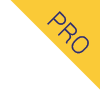

Connect Tetrix Gamepads to the Motorola phones
In this tutorial, we connect the Motorola phones to the Tetrix controller using the USB hub.
- #514
- 12 Apr 2017


In this tutorial, we connect the Motorola phones to the Tetrix controller using the USB hub.


In this tutorial, we would build a simple program for controlling the Tetrix robot motors with the GamePads. We use the stick and when the stick is pushed forward the motors move forward. When it is pushed backwards the robot moves backwards.


In this tutorial, we are controlling the FTC Tetrix robot with the two sticks of the same GamePad. The left stick is for forward and backwards, while the right stick is for left and right.


By using the GamePad to control the arm with could lift it and return it back. The main problem with controlling the arm is that if you just use the motors you would hit the robot, bend the axles and breaks the gear wheels. We would use the distance sensor to make the arm move without hitting the robot.


Control the hand of the FIRST Technical Challenge Push Bot robot with the GamePad bumpers.

Would you like to resolve all the problems with the light/color sensors that you have? And to make all of them work in a predictable, stable way even when using more than one MINDSTORMS colour sensors.
When using Color sensors it is important to calibrate them depending on the light conditions in your venue. In this way, the calibrated sensor will show values between 0 and 100 independent of the light conditions. But using the default EV3 colour calibration available in the colour sensor block could lead to unpredicted problems that are difficult to track and resolved especially when used with multiple Color sensors. So in this series of tutorial we implement the calibration ourselves discussing the principles of colour sensor calibration.


In the course section for Advance Sensor Calibration we previously showed you how to find the minimum and maximum value for a single LEGO Mindstorms Color Sensor and to store this value in an array. The program was implemented with the EV3-G software. In this tutorial we are going to find the Min and Max for all the four sensors and to store all the 8 values in an array.


Following the Advance Sensor Calibration course section, we found the min and max values detected by each sensor. Now it is time for the real deal of the calibration. Detect the current value from the sensor and find what is the percentage of this value for the range between min and max.


Many times we just upload blocks and leave it up to you to use it. In this tutorial, I would like to show you how to use the implemented blocks. How to import them into the EV3-G software. How to see them in the palette. How to drag and drop them to build a working program.


Implement the program for array initialization.
Follow the video tutorials for initializing arrays and implement the program.


As an exercise try to implement the calibration of the minimum and maximum values for a single sensor.

Following the previous tutorials from the course, implement the calibration of the minimum and maximum values.


Implement a program for stopping at a black line with the blocks containing the implementation details for the InitArray, Calibration and Getting the calibrated result.